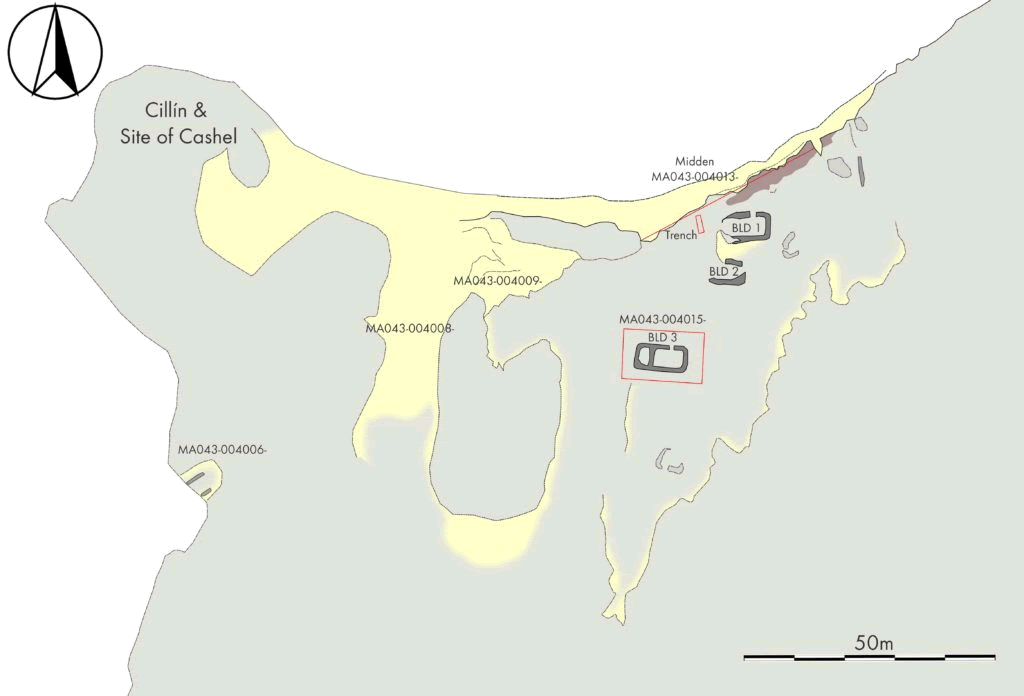This article is © Copyright Achill Archaeological Field School
In 2018, the Achill Archaeological Field School began the exciting new Caraun Point excavation project. Caraun Point, located on the northern coast of Achill Island, is a small sand-covered peninsula jutting into the Atlantic Ocean and is well-known for its rich archaeological remains which includes an early medieval enclosure, a children’s burial ground, shell middens and a number of stone buildings of unknown date eroding out of the sand dunes.
The principal element of the complex is an early medieval caher (or ringfort) that was later used as a burial ground for unbaptised infants. Cahers were the enclosed homesteads of landowners in medieval Ireland, and the Caraun point example is one of only a handful known on Achill. The site is surrounded by a number of middens consisting of dense deposits of shell, animals bone, and refuse from the settlement. Just east of the caher are a number of rectangular stone buildings eroding out of the sand.
Stray finds retrieved from this area indicate occupation during the 17th-18th century. The site has produced a large number of stray finds, including prehistoric stone tools, a coin of Edward I, a hand-mill fragment, clay pipes, Buckley-type ware, coarse earthenware, and a 17th century date stone.
In 2018, the excavation project targeted one of the houses and an adjacent shell midden. Both the house and midden were shown to be 18th-century in date. The excavation uncovered exciting evidence for life in the west of Ireland during the 1700s. As well as a rich shell and faunal assemblage, the excavations yielded many finds including a hand-mill, several 18th century wine bottles, ceramics, glass beads etc.
In 2024, the Achill Field School team and students will further investigate the settlement and its associated shell middens. Ongoing work and research at the site will provide a significant insight into community life in the west of Ireland during this dynamic period, as well as contributing to the development of a diachronic picture of settlement in sand-dine landscapes on the Atlantic littoral.
